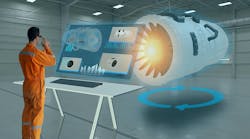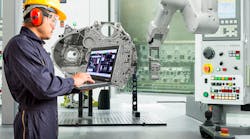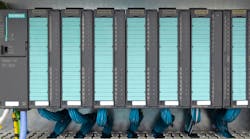Siemens PLM Software released an update for its Teamcenter ® product lifecycle management program, an information technology platform established to help companies make more-informed decisions with greater efficiency and confidence. Teamcenter subscribers use it to design complex products and communicate design and process decisions to the production chain, while maximizing productivity and streamlining operations.
Teamcenter 9 adds an “integrated systems engineering solution and tightens the integration across the unified architecture so companies can make smarter decisions with better visibility into the impact of those decisions,” according to the developer.
“To face the challenge of increasing globalization of the enterprise and the ever-growing complexity of products, our customers require a more intelligent PLM system that provides the right information to the right person at the right time,” stated Eric Sterling, SVP/GM, Lifecycle Collaboration Software for Siemens PLM Software. “Teamcenter 9 continues to build on the unified architecture with a more integrated approach to connecting the information generated by teams across the extended enterprise, while giving them a more personalized and productive user experience.”
Systems engineering — According to Siemens PLM the new Teamcenter software provides a fully integrated approach to systems engineering and requirements management. Rather than rely on stand-alone tools for system modeling, documenting interfaces, and documenting requirements, it “delivers a more systems-driven approach to product development,” according to the developer, one that is managed from within the Teamcenter environment. This allows a common view of the system up and down the process chain, helping to avoid costly late-stage system integration problems that result from requirements not being tied to physical implementation. Teamcenter 9 accelerates the product development process through intelligently integrated information, and ensures all departments and disciplines are using synchronized product information.
Integration with familiar tools like Microsoft’s Outlook messaging software, Word, Excel spreadsheet software, and Visio software, as well as MathWorks’ MATLAB environment and Simulink environment, support a variety of methodologies for systems definition and modeling using the tools familiar to engineers.
Content management — Technical documentation is a critical component of product development as it supports delivery of documents like user guides and repair manuals along with the release of a product. Formerly, product development needed to be completed before documentation could be created.
Teamcenter 9’s enhanced integration of content management allows product documentation to be created in parallel with the design process, thereby ensuring that changes are communicated as they occur and their impact can drive documentation more efficiently. Moreover, because products frequently may have multiple options and variations, Teamcenter content management supports configuration-driven documentation that reuses common components of text, graphics, and meta-data. This provides efficient, context-based multi-channel publishing to support the need for multi-media delivery on different devices and in multiple languages to support global markets.
In addition, tighter integration to Cortona3D’s Rapid Author application enables documents to be created with illustrations that remain linked to the design data they describe, so changes will be reflected in the documentation. The new release also supports the latest version of the S1000D standard used in aerospace and government documentation as well as the DITA (Darwin Information Typing Architecture).
Service lifecycle management — Siemens PLM Software extends its Service Lifecycle Management “vision” with a new service-scheduling and -execution module. Usually, service scheduling and execution have been separate activities conducted outside of PLM, which made it difficult to track service that may have been completed in compliance with published procedures. In turn, this gap in functionality increased safety risks, product failures, or even downtime that could result in additional costs or fines.
Teamcenter 9 integrates the service-scheduling and -execution management functions, so the software users can control cost more effectively by defining and efficiently scheduling service orders and tasks. The new release also helps to optimize service organizations’ resources, improve service throughput and reduce asset downtime. Teamcenter tracks and captures the execution of these service tasks to maintain an accurate history of assets and service records. Service personnel also can use the feedback capability to provide input to engineers — furthering the goal of increasing product performance and reliability.
Process-based user experience — Product development requires involvement of occasional users as well as “power users,” who work in varying disciplines with varying needs and who need to access the right PLM data for the task at hand. Teamcenter 9 makes it easy to customize the users’ experiences with style sheets that can streamline processes regardless of whether they use the traditional Teamcenter rich-client (application) or thin-client (web) format. The layout can be easily customized to make it much easier for users to access task-specific information, actions, and behaviors, which streamlines their efforts.







